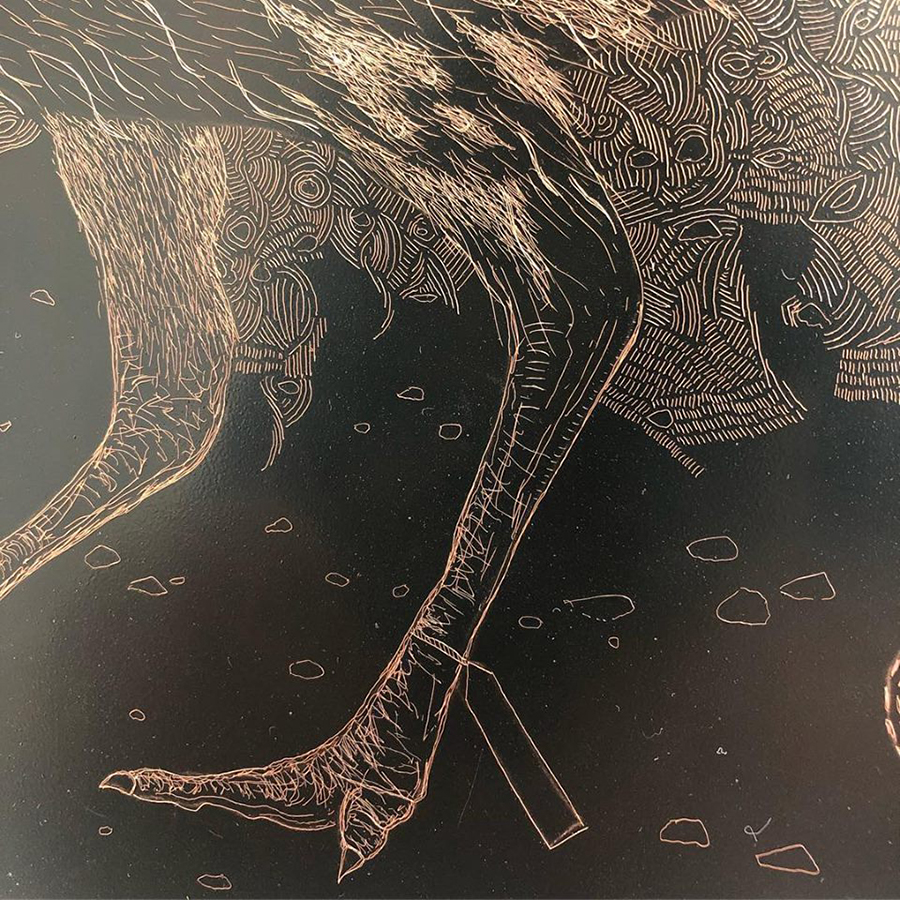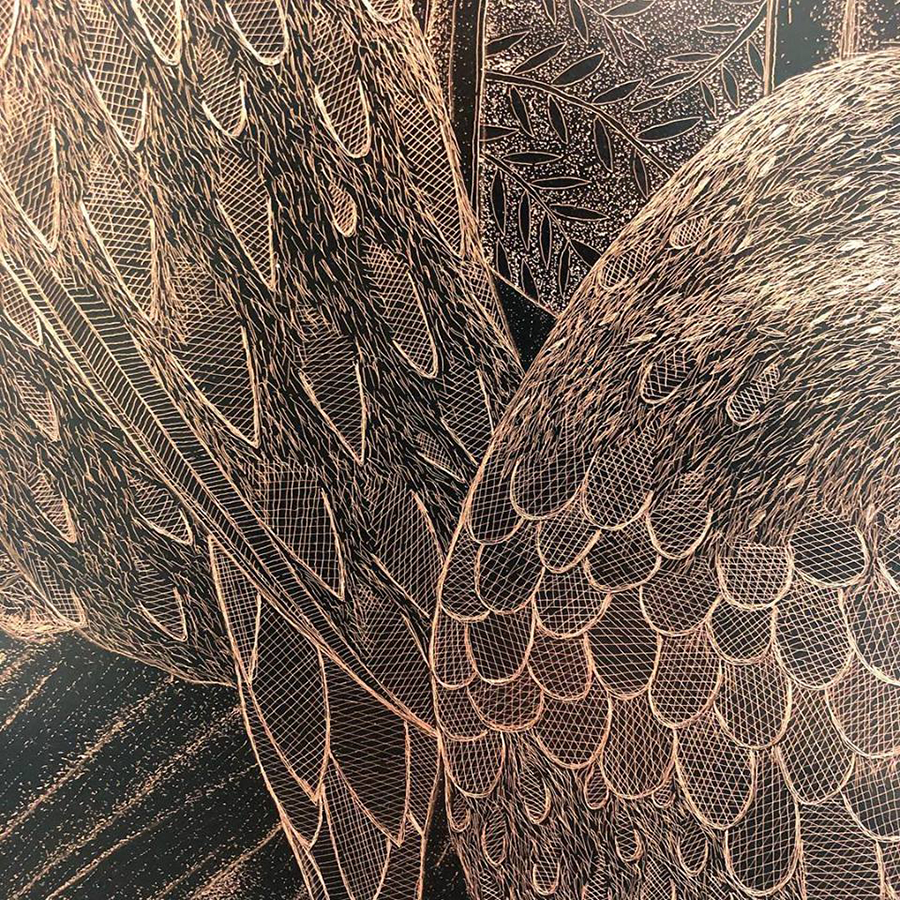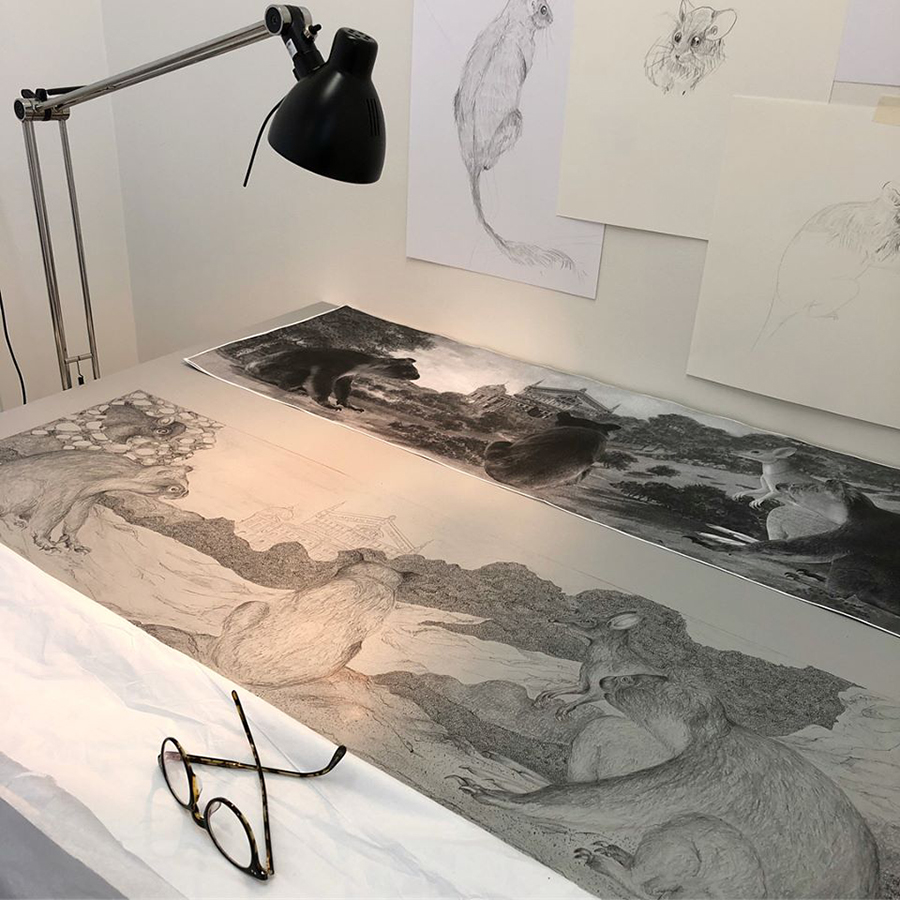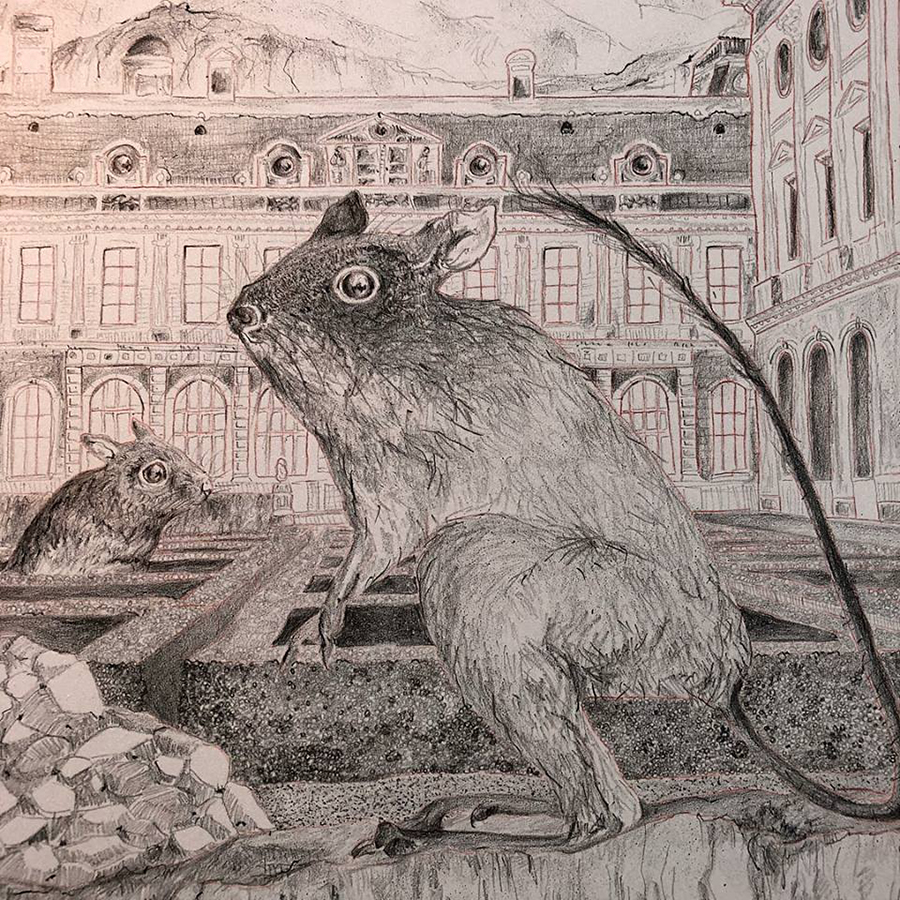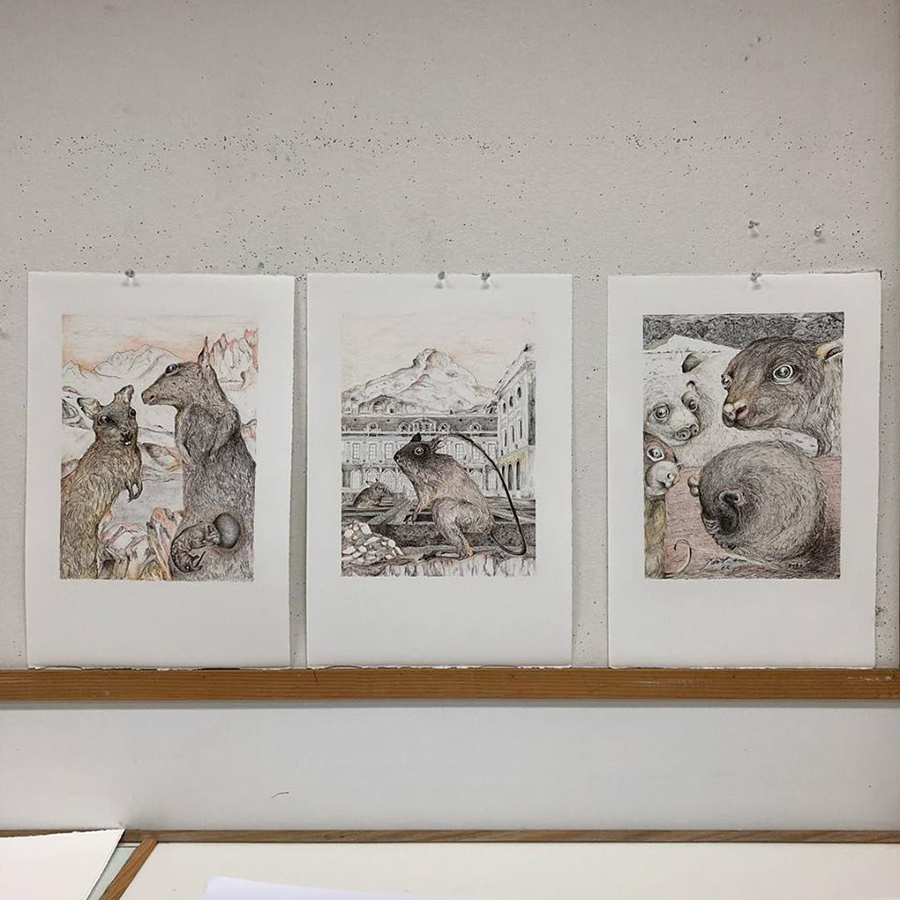In the direction that one is facing
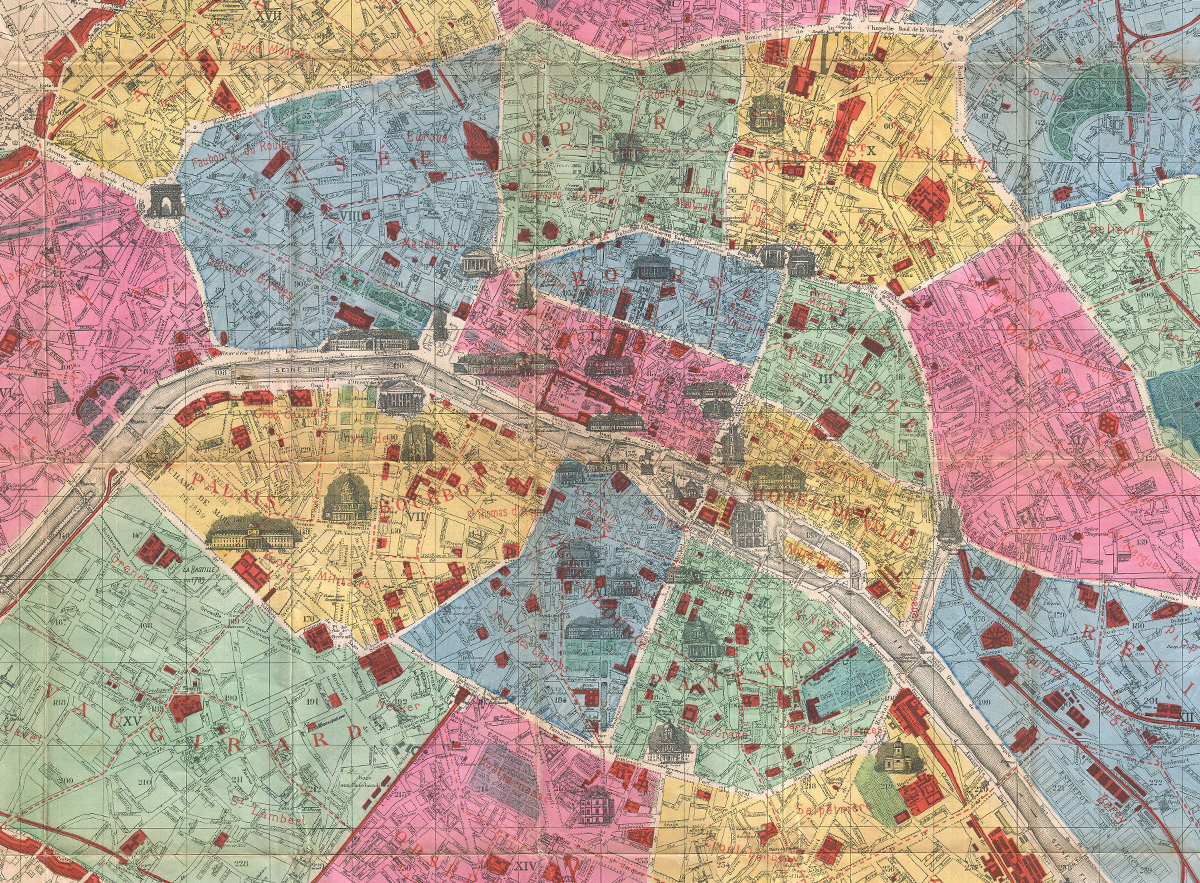
In the studio
French Connections process
Australian Print Workshop
August – September 2018
At a gallop, our time in the APW studio, where our owls and wallabies, our finches and spotted quolls, little by dash, are turning into self-portraits. As we work on one part, we are thinking about how it will work alongside a neighbouring pattern, animal, print; how things will look when the colour goes on; how things will balance. Inside my chest, a small rodent leaps. Inside Louise’s, a fairy wren flutters. We are relishing this opportunity, and we are mindful of blowing it. We are relishing the rawness of it, even though we feel bare.
On large grey plates and darkened grounds, our drawings from collages appear, and like the accompanying shuffle of images below, different stages of the process overlap. Stroke by stroke, a Winking owl (specimen) emerges. (Winking owl is a common name for Ninox connivens. The preferred common name is Barking owl, but as Louise works on their large eyes, it is the action of winking we have in mind.) An emu chick follows them, and then it is back to the owl.
Within the compositions you will find a Short-tailed spotted cuscus (Spilocuscuc maculatus) peering at a Dusky antechinus (Antechinus swainsonii), a Fawn hopping mouse (Notomys cervinus) fixed in the foreground of another, and an Eastern hair wallaby (Lagorchestes leporides) with prominent teeth the colour of parchment. Joining our series of paired portraits, two landscapes; one to stage a rotation of an Eastern pygmy possum (Cercartetus concinnus) specimen; the other, what appears to be a trip of koalas with a Freycinet-inspired kangaroo. Each day, we add a few more lines, tufts, and leaves. A few more feathers, here, little wisps of hair to the head of the Bennett’s tree-kangaroo (Dendrolagus bennettianus), there. Moving from plate to paper, thanks to Martin King, and back again, layering more bristles and feathers, dashes and pebbles.
Figuring out which parts of the image will be rosed a rusty red and which parts will be flecked warm like the sun was a beautiful winged beat. As we split colour on the plate and in our minds, we recalled the painted skulls we saw in the Fragonard Museum.
On the 28th of May we shared, “the temporal region of the skull is blue, whether you are a lapin, a chien, a mouton, or a kangourou, and it is situated on both cerebral hemispheres of the mammalian brain. For hearing and balance, from the Latin word ‘tempus’ or time, it responds to poetry, presumably in all forms. The poetry the rabbit favours is probably quite different to mine, but not necessarily so. And since visiting the Fragonard Museum, whenever I rub my temples I will picture them blue like the painted skulls on display. Colour maps beneath the skin, distinct regions made comprehensible”. And on the 13th of September, it was time for our drawn specimens to receive the beginning of their colour, with plans afoot to blue their temples next April.
As we continue with the glorious business of separating and integrating colour on the various plates, ever popping in more feathers, foliage, and tonal shifts, making the copper sing, the (oft-quoted) words of Georgia O’Keeffe come to mind,
Whether you succeed or not is irrelevant — there is no such thing. Making your unknown known is the important thing — and keeping the unknown always beyond you….
This splendid ride!
Yellow, adjective, not yellow, verb.
yellow (jel.əʊ)
adjective
1. of the colour between green and orange in the spectrum, a primary subtractive colour complementary to blue; coloured like egg yolks.
"curly yellow fur "
verb
1. become yellow, especially with age.
"the cream paint was beginning to yellow"
Red, more like rust than bloodshot eyes.
red (rɛd)
noun
1. (Colours) any of a group of colours, such as that of a ripe tomato or fresh blood, that lie at one end of the visible spectrum, next to orange, and are perceived by the eye when light in the approximate wavelength range 740–620 nanometres falls on the retina. Red is the complementary colour of cyan and forms a set of primary colours with blue and green.
adjective redder or reddest
1. (of the eyes) bloodshot
What will the next stage of the process bring? Much! Much more colour, of that you can be sure. And the continued layering of information.
Australian Print Workshop, in the studio July – September 2018
French Connections process, part 1
Australian Print Workshop Paris study tour May – June 2018
French Connections, part 1
French Connections, part 2
French Connections, part 3
French Connections, part 4
French Connections, part 5
French Connections, part 6
French Connections, part 7
(Post) French Connections, part 1
(Post) French Connections, part 2
(Post) French Connections, part 3
(Post) French Connections, part 4
Image credit: 1889 map of Paris, The Blanqui Archive











































